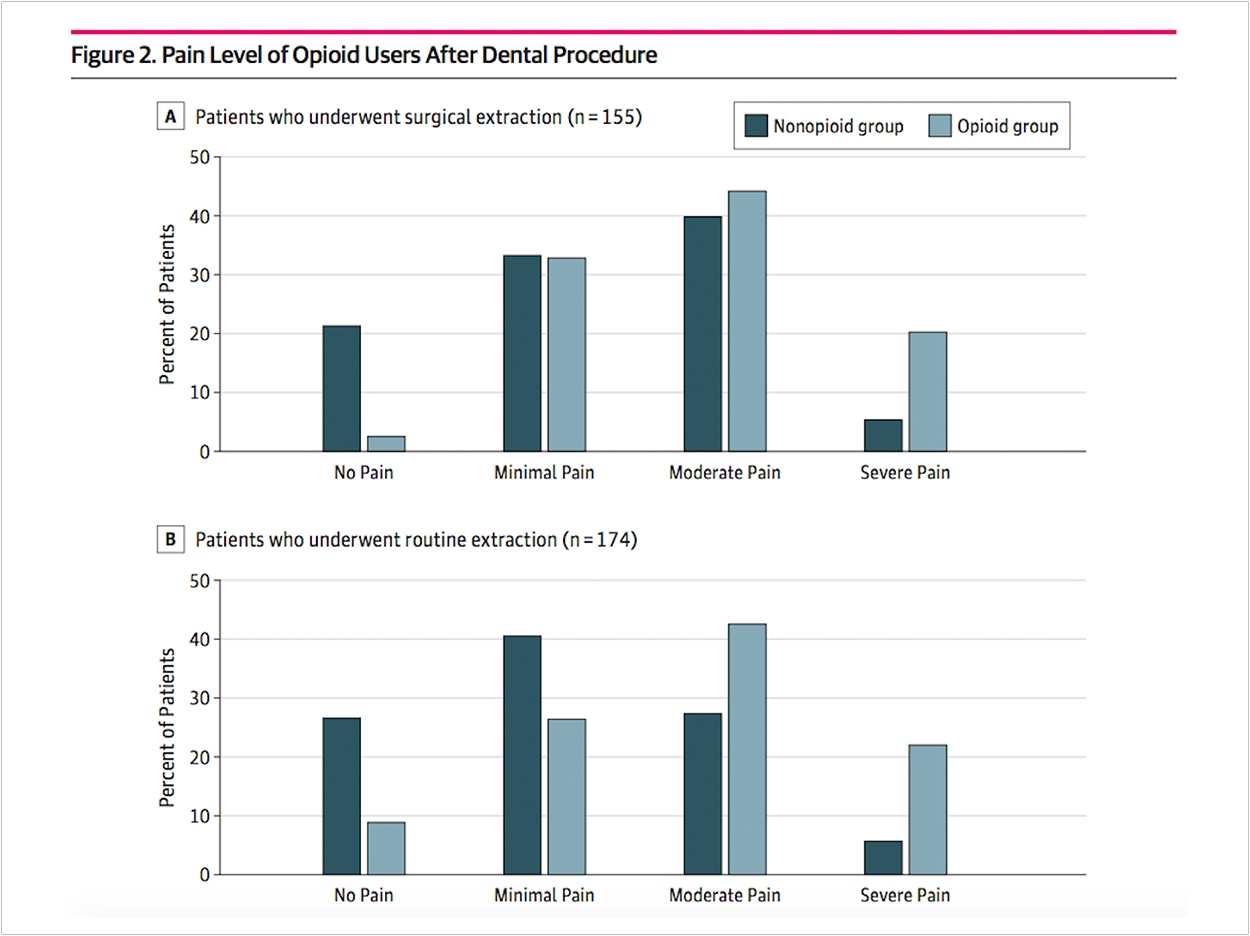
The use of opioids to soothe the pain of a pulled tooth could be drastically reduced or eliminated altogether from dentistry, reports the University of Michigan School of Dentistry.
More than 325 dental patients who had teeth pulled were asked to rate their pain and satisfaction within six months of extraction. About half of the study’s patients who had surgical extraction and 39% who had routine extraction were prescribed opioids. The school’s researchers then compared the pain and satisfaction of those who used opioids to those who didn’t.
“I feel like the most important finding is that patient satisfaction with pain management was no different between the opioid group and non-opioid group, and it didn’t make a difference whether it was surgical or routine extraction,” said coauthor Romesh Nalliah, DDS, clinical professor and associate dean for patient services.
Surprisingly, patients in the opioid group actually reported worse pain than the non-opioid group for both types of extractions, Nalliah said. Also, about half of the opioids prescribed remained unused in both surgical and nonsurgical extractions, which could put patients or their loved ones at risk of future misuse of opioids if leftover pills are not disposed of properly, the researchers said.
“The real-world data from this study reinforces the previously published randomized-controlled trials showing opioids are no better than acetaminophen and nonsteroidal anti-inflammatory drugs for pain after dental extraction,” said coauthor Chad Brummett, MD, director of the Division of Pain Research and of Clinical Research in the Department of Anesthesiology at Michigan Medicine, the university’s academic medical center.
Brummett also codirects the Michigan Opioid Prescribing Engagement Network (OPEN), which has developed, tested, and shared guidelines for the use of opioids in patients with acute pain from surgery and medical procedures.
“These data support the Michigan OPEN prescribing recommendations calling for no opioids for the majority of patients after dental extractions, including wisdom teeth extraction, Brummett said.
The results have big implications for both patients and dentists and suggest that prescribing practices need an overhaul, the researchers said. And while the ADA suggests limiting opioid prescriptions to seven days’ supply, Nalliah believes that’s too high.
“I think we can almost eliminate opioid prescribing from dental practice. Of course, there are going to be some exceptions, like patients who can’t tolerate nonsteroidal anti-inflammatories,” Nalliah said. “I would estimate we can reduce opioid prescribing to about 10% of what we currently prescribe as a profession.”
For dentists, many of whom are sole proprietors, the researchers said, this new information means they needn’t worry so much about unhappy patients changing practices if they aren’t prescribed strong opioids. Alternatives such as nonsteroidal anti-inflammatory drugs or acetaminophen appear to control pain better, and patient satisfaction remains high, the researchers said.
Nalliah gives two reasons why. First, dentists may have prescribed opioids in only the toughest cases, which could have resulted in more pain regardless.
“Or alternatively, and this is the reason I tried to accept, is that our study concurs with previous studies that suggest opioids are not the most effective analgesic for acute dental pain,” Nalliah said.
“Dentists are torn between wanting to satisfy patients and grow business and limiting their opioid prescribing in light of the current crisis. I think it’s an extremely liberating finding for dentists who can worry more about the most effective pain relief rather than overprescribing for opioids,” said Nalliah said.
Dentists account for about 6% to 6.5% of opioid prescriptions in the United States, the researchers said, calling it a relatively small amount. But the study notes that dentists are among the most common prescribers for minors, and for many patients, dental opioid prescriptions are their first exposure.
The study, “The Association of Opioid Use With Pain and Satisfaction After Dental Extraction,” was published by JAMA Network Open.
Related Articles
Opioids Versus Over the Counter: Pain Relief in Dental Care
More Than Half of Dental Opioid Prescriptions Exceed CDC Guidelines
US Dentists Prescribe 37 Times More Opioids Than English Dentists












